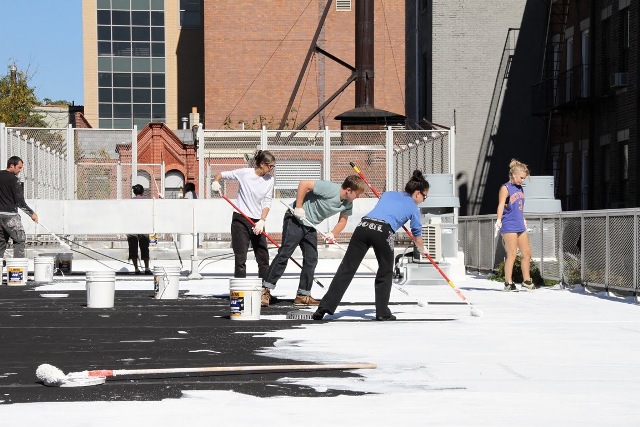After the midterm election, selling climate change got even tougher than it was before. Immensely wealthy business interests and their allies have skillfully muddied the waters and blocked action. The NYC sustainability discussion, mainly framed as climate change response, should be reframed to include the more marketable concepts of increasing resilience, and preparing for higher and more volatile energy prices. Here’s how we can build public support for all of them at the same time.
Let’s weave into our narratives our dependence on oil, our vulnerability to upcoming increases in oil prices, and thus, the value of lowering energy costs, creating green jobs, and restoring energy security. Even the International Energy Agency has quietly admitted that world conventional oil production peaked in 2006, and a growing consensus of expert observers and business leaders expect it to go into permanent decline by 2015. Oil prices will become increasingly volatile, with a strong likelihood of oil price shocks or supply crunches. Remember how upset New Yorkers were at slow snow removal? Unlike the effects of climate change, often seen coming far in the future, higher fuel prices will have local and immediately evident impacts. It will cost more to heat buildings and homes. Higher transportation costs will affect commuting, the trucking of goods, and the operation of police, fire, school and garbage vehicles.

So far, direct efforts to get busy NYC officials to address fuel depletion hasn’t worked. Most government officials aren’t aware either of the problem, or that tackling it openly will provide opportunities. New Yorkers will be more motivated to buffer increases in transportation and winter heating costs than to lower their carbon emissions. Initiatives that lower energy use and costs will align with top public concerns. Expanding less expensive public transit options, reducing reliance on more expensive private transportation and cutting energy use in buildings are responses to fuel price volatility as well as to climate change. Especially in times of tighter budgets, why not use the more persuasive arguments of costs to encourage the better choices? Policy choices that will buffer impacts of higher fuel prices will make the City more resilient, while creating green jobs that can’t be outsourced.
Two parallel indirect strategies may expand the sustainability discussion in helpful ways. First, highly targeted outreach to networks of thought leaders, on how their fields will benefit from initiatives that conserve energy, lower costs and build local resiliency. Second, outreach to NYC civic networks on behalf of appealing sustainability projects that offer something to all participants.
To carry out these approaches, Beyond Oil NYC is organizing spring presentations by public health expert Dan Bednarz, PhD to audiences of health system administrators. Last year, a consortium of volunteer groups partnered with NYC Department of Buildings in its effort to paint building roofs white, lowering summer energy use and costs. We’re developing marketing materials to set up more such projects in 2011. For more about these approaches, and to get involved, visit www.beyondoilnyc.org.
by Dan Miner, Beyond Oil NYC
For a full version of this article, go to http://beyondoilnyc.blogspot.com/2010/11/nyc-sustainability-in-time-of-climate.html.



